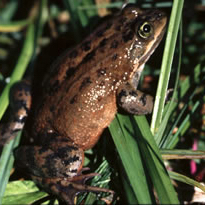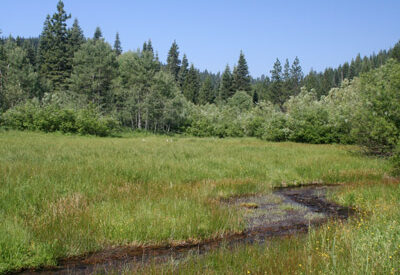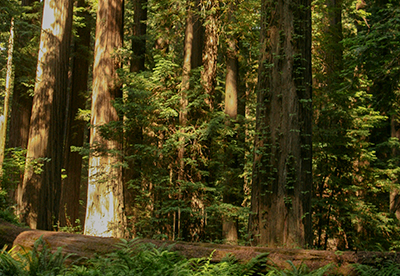
Quick Facts
Latin Name: Rana pretiosa
Status: Threatened
Population: Found throughout central and western Oregon and western Washington
Diet: Insects
Length: 1.74 to 4 inches
About the Oregon Spotted Frog
The Oregon spotted frog is named for the black spots that cover its head and back. The body color on adults ranges from brown to brownish-red and becomes increasingly red as the frogs age. The species is very aquatic, even compared to other amphibians. Oregon spotted frogs are almost always found in or near water.
Mating typically occurs between March and June, and eggs are laid in pools of water no more than six inches deep. When the tadpoles hatch, they graze on plants and bacteria before metamorphosing into froglets during their first summer. Adults feed primarily on insects and they begin mating at around three years of age.
The Oregon spotted frog is believed to have lost at least 78%, and possibly as much as 90%, of its former habitat and is no longer found in the state of California as a result of habitat loss, invasive plants, and the introduction of non-native predators.
For more information: U.S. Fish and Wildlife Service
Photography: Image #1 by U.S. Fish and Wildlife Service, Image #2 by Mid-Columbia River Refuge.
HABITATS
The Oregon spotted frog lives in the following habitats:
HOW YOU CAN HELP THIS SPECIES
The Oregon spotted frog needs your help to preserve its natural habitat. Together, with Pacific Forest Trust and our network of partners, we can all protect the spaces this species needs to survive.
Help conserve America's forests.
Stay in the know. Get the latest news.
Conservation PROJECTS WITH
Oregon spotted frog HABITATS
The Pacific Forest Trust is dedicated to preserving natural habitats and forest systems where animals can thrive. Explore some of our conservation projects and easements in and around the Oregon spotted frog habitat.


